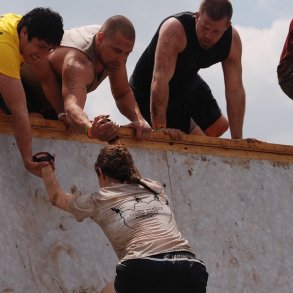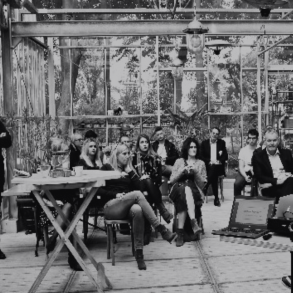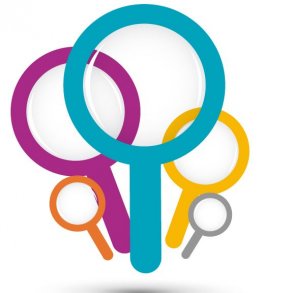By Dennis Wittrock and originally published at encode.org on medium.com
Ever since Eugen Herrigel’s popular book “Zen in the Art of Archery” the magic formula “Zen in the art of…” has entered the pantheon of ready-made, catchy titles. So here’s another one. The inspiration hit me when reading the book “The Science of Enlightenment” by contemporary American Zen Buddhist teacher and ‘dharma geek’, Shinzen Young. In this article I apply his pearls of wisdom to the organizational realm, to the practice of Holacracy, and to the For-Purpose Enterprise — exploring commonalities between them.
A Tangled Mess
 To begin with, it is important to understand one of the major insights of the historical Buddha. After having practiced and mastered the available meditative practices of his time, the Buddha developed a new path, Vipassana, or insight meditation. The pioneering aspect of this particular kind of practice was that it helped to build a capacity which Shinzen Young calls “sensory clarity”.
To begin with, it is important to understand one of the major insights of the historical Buddha. After having practiced and mastered the available meditative practices of his time, the Buddha developed a new path, Vipassana, or insight meditation. The pioneering aspect of this particular kind of practice was that it helped to build a capacity which Shinzen Young calls “sensory clarity”.
Generally speaking, our everyday consciousness is clouded by identification with the ego — a story about ourselves that we tell ourselves incessantly, thereby reaffirming the solidity of “I”, “Me”, and “Mine.” By pushing away unpleasant experiences and grasping for pleasant experiences, we enmesh ourselves deeper and deeper in the circle of suffering. We react based on ego-identification, tell ourselves a destructive story, act unskillfully, and suffer from the effect of our actions. The suffering reinforces the identification and another cycle of suffering begins.
Developing sensory clarity (Vipassana) interrupts this cycle by deconstructing the elements of self-hood, the stuff the ego is made of. Shinzen calls the process “untangling”. What are tangled are the sensory modalities, which constitute our experience. As a scientist with a knack for elegant categorization, Shinzen proposed a system which identifies 6 types of sensory modalities, composed of the 3 outer and 3 inner versions of see, hear, feel.
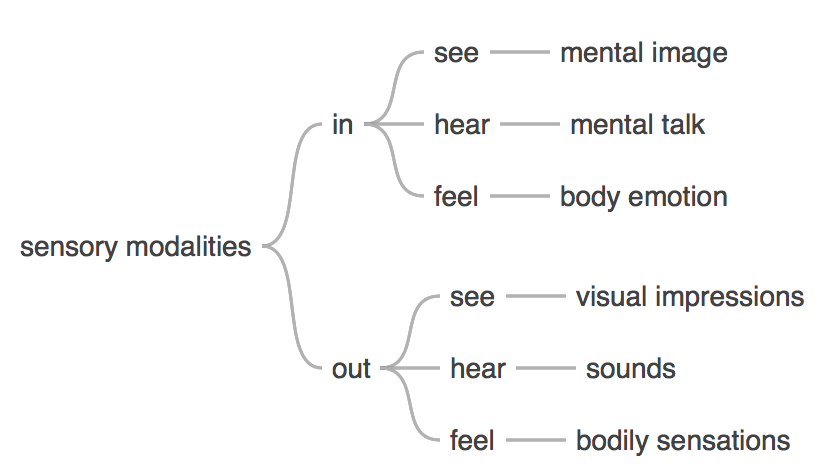
Shinzen claims that you can cover the entire range of human experience and map it into combinations of see, hear, feel in their interior and exterior versions.
The problem for most people is that these modalities tangle, for example, an exterior sound (car honking — “hear out”) tangles with mental talk (a story — “hear in”), and with a body-emotion (anger — “feel in”). The result may sound something like an angry question inside your head saying “Why is this idiot honking?” Every reaction to that tangled mess simply reinforces the suffering and ultimately the sense of a solid ego or self-contraction, which relentlessly bumps into other egos.
Dividing and Conquering the Ego
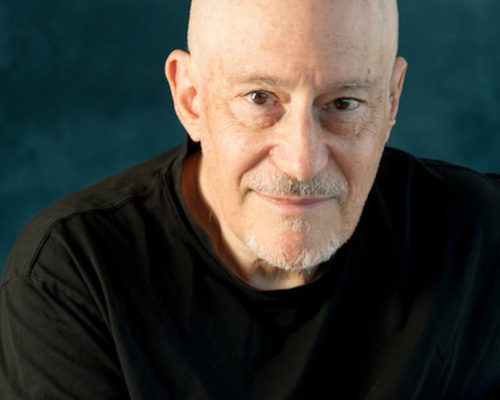
Sensory clarity means that through diligent meditation practice you have developed the capacity to dissect the stream of experience into its sensory modalities. Thereby you are able to untangle the elements that give you the impression that you have a solid self that would be affected or threatened by any of these experiences.
Shinzen gives the image of a multicolored thread that needs to be untangled at finer and finer levels of scale as your practice deepens.
To fully untangle sensory modalities is a “non-trivial task” according to Shinzen. Once you do, you are able to see through phenomena more clearly and align your actions better to what is needed now.
Another image he used is that of an old TV set. From the distance you see the image of a person on the screen, but if you move closer and closer to the screen the colors differentiate and you see a pattern of tiny red, green and blue bars that constitute the pixels of what seemed like a solid person. You’ve increased the resolution of your consciousness and now you are able to see through the illusion of permanence and grasp the fleeting nature of selfhood. Hence, you don’t suffer as much from it anymore. In Shinzen’s words,
“Untangle and be free. Or, put more aggressively — divide and conquer.”
Holacracy: An Awareness Practice for the Organization
Short introductory video about Holacracy (2 min.)
How does this map to the realm of organizations? Early on I had the sense that the practice of Holacracy is a kind of ‘meditation for the organization.’ To begin with, Holacracy puts an emphasis on the principle of dynamic steering even over planning and predicting. As such it is focused on the present moment, like awareness practices that try to anchor you back to the now by having you focus on your breath. As with any real practice, thinking about doing it won’t cut it. You have to actually put in the work of doing it regularly.
With Shinzen’s framing of untangling sensory modalities, I started to understand why and how the practice of Holacracy helps us to resolve a lot of organizational complexity. This is particularly evident in its meeting practices. On a very broad level, Holacracy helps us to untangle Operational questions from Governance and Strategic questions, by offering specific meeting formats for each.
Untangling Tensions via Governance
Governance meetings in Holacracy are used to clarify and amend expectations that we have towards role fillers. They clarify where the work lives and make authorities and constraints of authority explicit. When a circle and its role fillers meet, the rigorous Governance process dissects the mess of tangled tensions and processes them one at a time in a very focused manner. Here’s a summary of what gets untangled at each step of the process.
During the Check-In round participants get the invitation to let go of what’s having their attention now, thereby untangling lingering thoughts or feelings from the reality of the meeting that has just begun. During the Agenda-Building, individual tensions are being captured using one or two words instead of tangling many of them under general umbrella-topics — even if you end up having two agenda items saying “marketing”. Agenda items anchor back to individual tensions, so my tension with marketing may be different from yours. Since Holacracy needs clear sensors for the resolution of a given tension, tangling up different tensions under a single headline is discouraged right from the start.
During the Present Proposal step the very act of uttering the proposal and making it public untangles it from the person. If a circle member has the sense that the proposal is not rooted in real tensions or not coming from role, he can ask the facilitator to test it. To survive the test, the proposer has to provide an example of where the tension showed up and name the role that it was sensed in. This helps to untangle and clarify what tension is coming from role versus coming from person.
During Clarifying Questions the facilitator pays attention to untangling true information-seeking questions from information-conveying reactions. This step also helps to untangle semantic issues that people might have with regard to the proposal. The following Reaction Round untangles the individual reactions since no cross-talk or discussion is allowed during this step. People get a chance to blow off steam if they want to or just share their thoughts, which helps to untangle how they feel about the proposal from the more formal objections they might have with it (in a later step). During Amend & Clarify the proposer gets a space to sort through the reactions he has heard and untangle irrelevant from helpful information.
Untangling Objections
During the Objection Round harmful proposals are untangled from safe enough proposals. The test-questions help to untangle
- objections rooted in real examples from vague disagreement
- what is a minimally sufficient solution for the proposer from “better ideas” by others
- new problems caused by the proposal from things that are already problematic and therefore not caused by the proposal
- presently known problems from anticipated problems
- unsafe anticipated situations from safe-enough anticipated situations
- role-rooted objections from personal objections or expressions of “helper” syndrome
- formally valid output from non-valid governance output
If valid objections surface they are being dealt with in Integration. Integration helps the proposer untangle his original tension from his personal pet-solution. This is an important difference since we have more flexibility, as soon as the proposer doesn’t hold tight to his initial solution for his tension but focuses on solving the tension instead. You may be hungry and want to eat a burger, but a pizza might satisfy your tension of hunger equally well. Further, integration untangles the original tension from subsequent tensions (objections) by integrating the objections one after the other. For this, the facilitator checks in with the proposer and the objector to verify that a given amendment resolves tensions for both sides.
Overall, the governance process shortcuts the search for the “best” possible proposal in favor of a minimally sufficient workable way forward. This process orientation towards incremental progress (versus speculating about the optimal solution) expresses the same preference for ‘be-here-now’ over ‘let’s get lost in future mental scenarios’ which bears semblance to meditative awareness practices.
Cleaning out the Garage — Untangling Tactical Operations
In addition to untangling the governance aspects Holacracy also helps with clarifying the operational work of the organization. It does so by encoding fundamental requirements of the Getting Things Done (GTD) methodology into its constitutional rules for running operations. All role fillers are expected to keep track of their current projects and next-actions. A “project” is defined as any outcome that takes more than one next action step to achieve it. A “next action” is a physical action like picking up the phone and calling somebody or writing an email. The GTD creator David Allen points out that items that often end up on our To-Do lists are messy and not really actionable, which is what causes us to procrastinate.
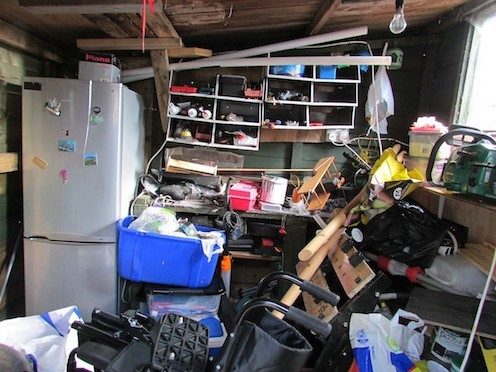
“Cleaning out the garage” is not actionable as a next physical action because it consists of multiple steps. I might want to get rid of the card boxes in the garage, but will first have to call the recycling station to ask them when they are open. To reach all of the boxes I would first have to move the old car out of the way, which has a flat tire. So in order to do that I would have to change the tire first. I will never “clean out the garage” as long as all of this is still a tangled mess in my head.
The secret is to frontload the hard work of thinking this through by breaking down the intended outcome into actionable chunks. If we habitually delay this cognitive work reality will kick us in the butt and eventually force us to deal with it when the end of the deadline approaches. Holacracy anchors the good habit of untangling projects and next actions as soon as possible so that we can consciously allocate attention and energy to it before things get urgent. David Allen refers to this as cultivating “a mind like water” which allows us to stay present with whatever reality throws at us. Brian Robertson considers mastering this clarity as his “spiritual practice”.
Using the Tactical Meeting process helps us to untangle in several ways: Checklist Review, Metrics Review and Project Updates paint a picture of the current situation. This helps us to untangle the “is” from the “should be” and highlight tensions that can then be processed during the Triage Issues step. During triage the facilitator asks, “What do you need?” thereby helping to untangle the tension from all the other things that could be talked about with regard to the agenda item. By anchoring tensions with their individual sensors and checking back whether they have been addressed, the Tactical Meeting process untangles the individual needs from each other and offers each of them a clear pathway for resolution.
Untangling Tensions Beyond Holacracy with the For-Purpose Enterprise
After years of practicing Holacracy it became apparent that there are certain classes of tensions that Holacracy wasn’t designed to address. Holacracy doesn’t prescribe how to deal with interpersonal tensions. It simply untangles them from organizational tensions and sorts them out, leaving people to figure out what to do about them.
Similarly, Holacracy remains mute on the question about which legal construct you should choose, how compensation should work or what ownership constructs you should go for. To be fair, it doesn’t advise you on marital problems either. This is to say that criticism of Holacracy should always be anchored in what Holacracy tries to be and not in what people project it should be. It was designed to be a wholesale replacement of the classic management hierarchy and it excels at that.
Nevertheless, the pioneers behind encode.org sensed the evolutionary tensions mentioned above and created the model of the For-Purpose Enterprise to address them.

In a nutshell, a For-Purpose Enterprise differentiates between three containers: Organization (á la Holacracy), Company (legal and financial matters) and Association (the people and interpersonal matters). This way, it supports the individual Purpose Agent in untangling various tensions related to her role-work, her financial and legal commitments, as well as her social relationships with fellow Purpose Agents. (Learn more about the FPE in this article)
Working, Earning and Living as a Differentiated Whole
Holacracy is the red pill in the Matrix of work. It helped to untangle role from soul, the organization from the individual and to break the unconscious habits that kept people trapped in a limited identity fused with their job title and position. Those who have tasted it rarely want to go back to business as usual. Now is the time to go even deeper down the rabbit hole, pick up the pieces and put them back together in a new way.
The purpose of encode.org is “Going Beyond Employment. Liberating Purposeful Work.” The For-Purpose Enterprise model helps to untangle and resolve additional tensions compared to only using Holacracy. It provides a clear container for untangling interpersonal tensions — the Association. With a clear Association Agreement and recommended guidelines for personal and interpersonal tension resolving practices, it provides even more ways to untangle projections, introjections, and hurtful communication and transform them into communication and relationships that encourage trust.
Due to its legal Company container everybody is a member/ partner and there no longer exists a privileged class of founders, owners or shareholders that calls the shots in the background via personal power holding. As a co-entrepreneur you can process your tensions regarding earning models directly at the level of the Anchor circle of the Enterprise. (Learn more in this article)
The Organization container is run and structured according to the Holacracy ruleset — with all the benefits of untangling tensions as described above. On top of that, the For-Purpose Enterprise enables us to untangle tensions on a meta-level and route them to being processed in one of the three containers of Organization, Company or Association. This way, working, earning and living becomes a differentiated whole.
Summary
Mindfulness practice and the practice of Holacracy share some interesting features that generally improve the quality of any endeavor. Both increase your clarity by helping you to more effectively untangle your perceptions and tensions, thereby breaking old patterns that limit your identity (ego-stories like victimhood, helper-syndrome, power-trips, etc). They increase your presence and your ability to notice what is going on in the here and now instead of being caught up in your memories, plans or fantasies. They help you to ruthlessly face reality with a mind-like-water quality. This way they enable you to make more conscious and better-informed choices and consciously author your individual and collective story. They help you tap into intuitive wisdom by teaching you to listen to purpose. They turn you into a conscious evolutionary force on the planet.
Doing an individual meditative practice, like Vipassana or Zen will support you on your path as Purpose Agent and help you to lead a happier and more meaningful life. Likewise, engaging in the collective practice of Holacracy and re-routing tensions to the appropriate container of a For-Purpose Enterprise, will lead to beneficial effects. Both individual and collective practices of untangling reinforce each other in a positive feedback loop and foster evolution.
Untangle and be free!


